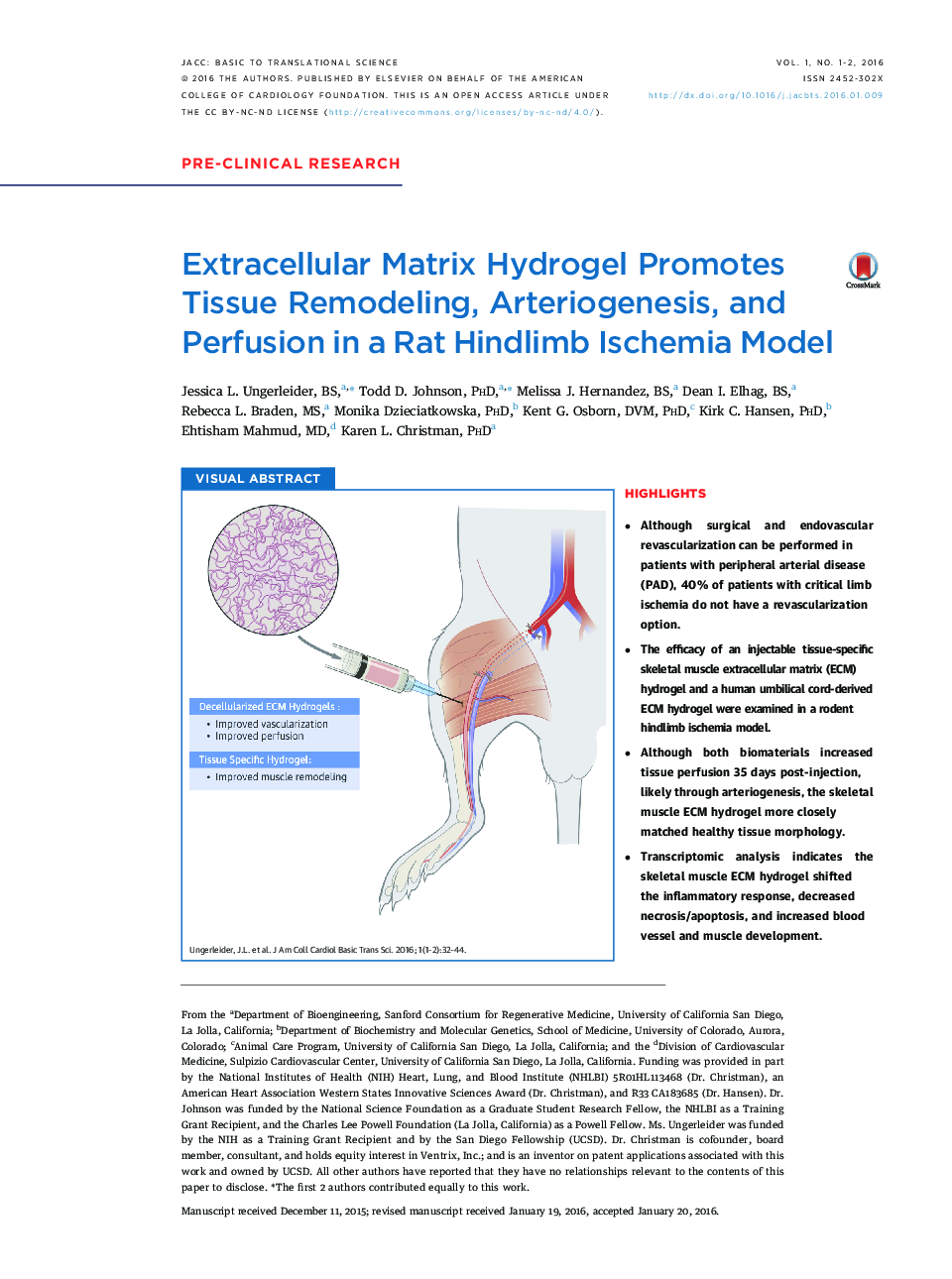| کد مقاله | کد نشریه | سال انتشار | مقاله انگلیسی | نسخه تمام متن |
|---|---|---|---|---|
| 2937579 | 1576543 | 2016 | 13 صفحه PDF | دانلود رایگان |

• Although surgical and endovascular revascularization can be performed in patients with peripheral arterial disease (PAD), 40% of patients with critical limb ischemia do not have a revascularization option.
• The efficacy of an injectable tissue-specific skeletal muscle extracellular matrix (ECM) hydrogel and a human umbilical cord-derived ECM hydrogel were examined in a rodent hindlimb ischemia model.
• Although both biomaterials increased tissue perfusion 35 days post-injection, likely through arteriogenesis, the skeletal muscle ECM hydrogel more closely matched healthy tissue morphology.
• Transcriptomic analysis indicates the skeletal muscle ECM hydrogel shifted the inflammatory response, decreased necrosis/apoptosis, and increased blood vessel and muscle development.
SummaryAlthough surgical and endovascular revascularization can be performed in peripheral arterial disease (PAD), 40% of patients with critical limb ischemia do not have a revascularization option. This study examines the efficacy and mechanisms of action of acellular extracellular matrix-based hydrogels as a potential novel therapy for treating PAD. We tested the efficacy of using a tissue-specific injectable hydrogel derived from decellularized porcine skeletal muscle (SKM) and compared this to a new human umbilical cord-derived matrix (hUC) hydrogel, which could have greater potential for tissue regeneration because of the younger age of the tissue source. In a rodent hindlimb ischemia model, both hydrogels were injected 1-week post-surgery and perfusion was regularly monitored with laser speckle contrast analysis to 35 days post-injection. There were significant improvements in hindlimb tissue perfusion and perfusion kinetics with both biomaterials. Histologic analysis indicated that the injected hydrogels were biocompatible, and resulted in arteriogenesis, rather than angiogenesis, as well as improved recruitment of skeletal muscle progenitors. Skeletal muscle fiber morphology analysis indicated that the muscle treated with the tissue-specific SKM hydrogel more closely matched healthy tissue morphology. Whole transcriptome analysis indicated that the SKM hydrogel caused a shift in the inflammatory response, decreased cell death, and increased blood vessel and muscle development. These results show the efficacy of an injectable ECM hydrogel alone as a potential therapy for treating patients with PAD. Our results indicate that the SKM hydrogel improved functional outcomes through stimulation of arteriogenesis and muscle progenitor cell recruitment.
Visual AbstractFigure optionsDownload high-quality image (187 K)Download as PowerPoint slide
Journal: JACC: Basic to Translational Science - Volume 1, Issues 1–2, January–February 2016, Pages 32–44